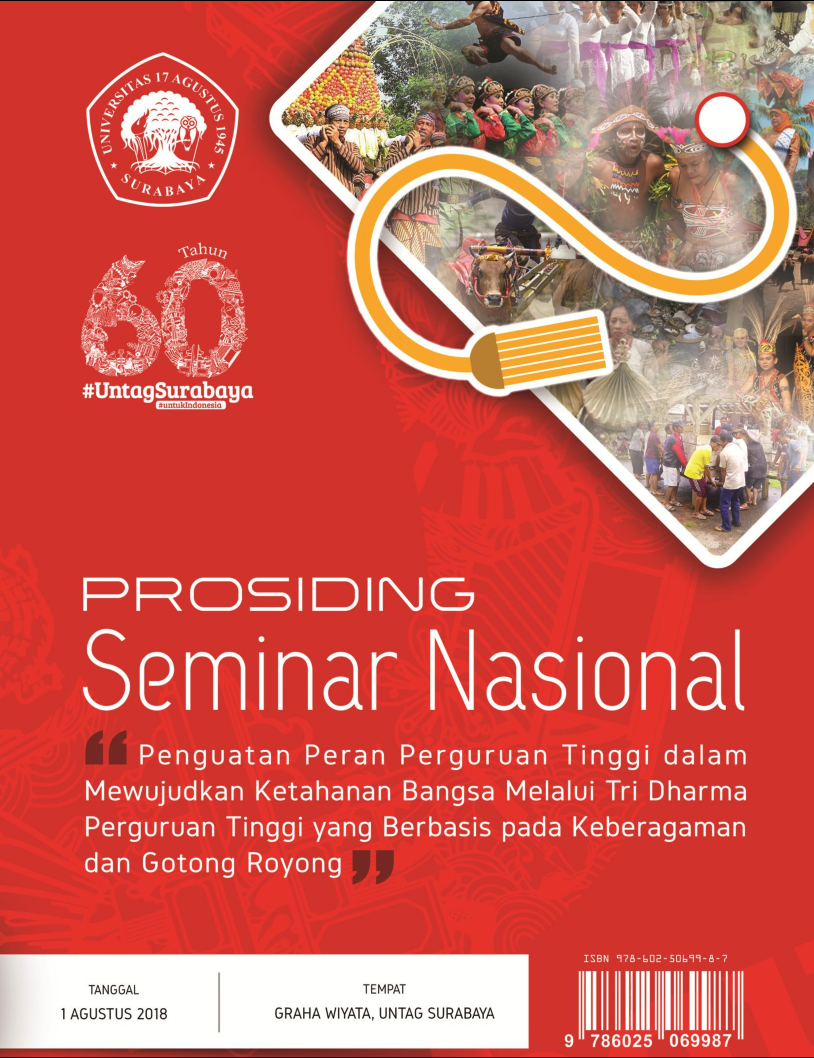ANALISIS BEBAN KERJA GUNA MENENTUKAN SOLUSI PERBAIKAN PADA CHECK IN COUNTER DI PT. LION MENTARI AIRLINES
Abstract
T. Lion Mentari Airlines is an airline company. The company has some staffs of check in who served the beginning of the process on passengers’s arrival before take off. Staff check in at PT. Lion Mentari Arilines has total number 18 staff and has many flight schedules, meanwhile the number of passengers on every one flight is able to reach 215 passengers. Then the check in counter staff is often overhelmed. It needs to do the workload analysis to find out how much the burden received by employees. In this reseearch, physical workload analysis was done by Workload Analysis method and mental work load analysis was done by NASA-TLX method. Data was collected by the Stopwatch Time Study Method and the NASA-TLX questionnaire. According to the results of physical workload analysis, the average workload received by the check in counter staff of 117.62% and the category is very high. Based on the result of mental work load analysis the mean of mental work load received by staff of check in counter is 74.22% as medium category. Recommendation is the solution was given by planning scheduling with simulation method. In the actual model there is no division between offline check-in and online check-in. The utility number is quite high from the three counters, 94.04%, 86.76%, and 93.46%. The result of scheduling simulation by dividing counter check in ie 2 counters to check i n offline with utility 89 and 85,66 and 1 counter to check in online with utility number 40.33%. Keyword: Simulation Methode, NASA-TLX, Stopwatch time study, Workload Analysis.Downloads
References
Arianti & Dewantari. (2011). Definisi Beban Kerja Fisik.
http://www.scribd.com?doc/Beban-Kerja-Fisik. Diakses pada 16 maret
pukul 04.15
Didomenico, A. dan Husbaum, M. A. (2011). Effect of Different Physical Workload
Parameters On Mental Workload and performance. International Journal
OfIndustrial Ergonomics
Fiansyah Adera. (2010). (Tabel Penyesuaian Westinghouse System).
http://aderafiansyah.blogspot.co.id/2010/08/pengukuran-waktukerja.diakses
pada
maret
pukul
07
Hancock, P.A dan Meshkati, N. (1988). Human Mental Workload. Elsevier Science
Publisher B.V: Netherlands.
Lake dan Ulrich. (1990). Tujuan Menejemen Sumberdaya Manusia.
https://headtoresearch.wordpress.com/2009/02/09/human-resourcemanagement/,diakses
pada10
Maret
pukul
17
Marwansyah. (2010). Manajemen Sumber Daya Manusia (2 ed). Bandung: Alfabeta.
O’Donnel, C. R. & Eggimeier, F. T. (1986). Workload Assessment Methodology:
Chapter 42, Handbook of Perception and Human Performance. II. 1 – 49
Rahadian R., Ishardita P.T. dan Remba, Y.E. Analisa Beban Kerja Dengan
Menggunakan Work Sampling dan NASA-TLX Untuk Menentukan Jumlah
Operator (Studi Kasus: PT. XYZ). Malang: Universitas Brawijaya.
Raras M.S. dan Sri G.P. Analisis Beban Kerja untuk Menentukan Jumlah Optimal
Karyawan dan Pemetaan Kompetensi Karyawan Berdasar Pada Job
Description (Studi Kasus: Jurusan Teknik Industri, ITS, Surabaya). Surabaya:
Institut Teknologi Sepuluh Nopember (ITS).
Rodahl & Manuaba dalam satria. (2013). Faktor Pengaruh Beban Kerja.
Http://www.google.com/search?=faktor+pengaruh+beban+kerjasatria/2013/,
diakses
Maret
pukul
18
Romadhoni, L., C., Asnomy T., & Suryatni, M. (2015). Pengaruh Beban Kerja,
Lingkunga Kerja, dan Dukungan Sosial Terhadap Burnout Pustakawan di
Kota Mataram. Jurnal Ilmu Perpustakaan Informasi, dan Kearsipan Khizanah
Al-Hikmah, 3(2), 125-145.
Sudaningtyas Satya. Penentuan Jumlah Operator Optimal dengan Metode
Simulasi.(Studi Kasus: Apotik Rumah Sakit X). Malang: Universitas
Muhammadiyah.
Simanjutak, R. A. (2010). Analisa Beban Kerja Mental dengan Metode Nasa-Task
Load Index, Jurnal Teknologi Technoscientia. 3, 78-86
Wignjosoebroto, S. (2008). Teknik Tata cara dan Pengukuran Kerja. Edisi kedua.
Jakarta: PT. Guna Widya.
Wignjosoebroto, S. (1995). Ergonomi studi Gerak dan Waktu Teknik Analisis untuk
peningkatan produktivitas kerja. Surabaya: PT. Guna Widya Jakarta.




